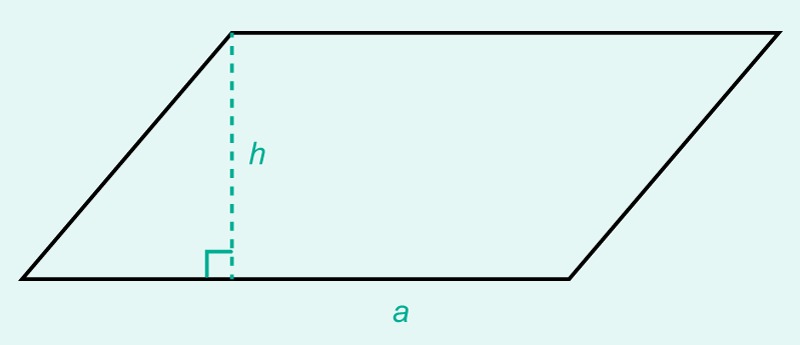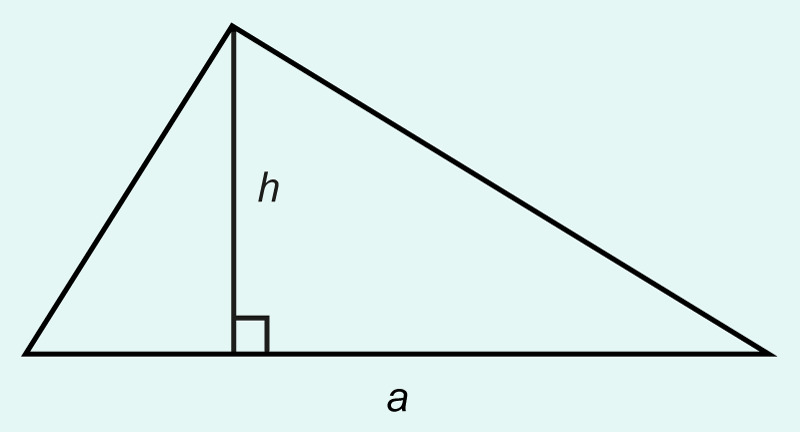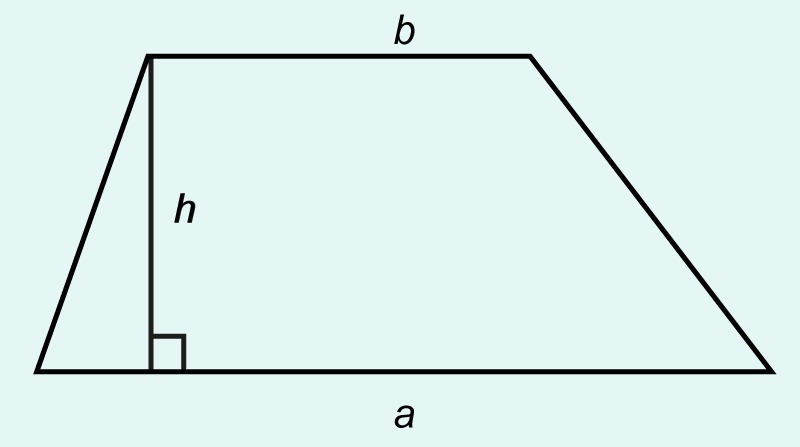Areas of triangles, parallelograms and trapeziums
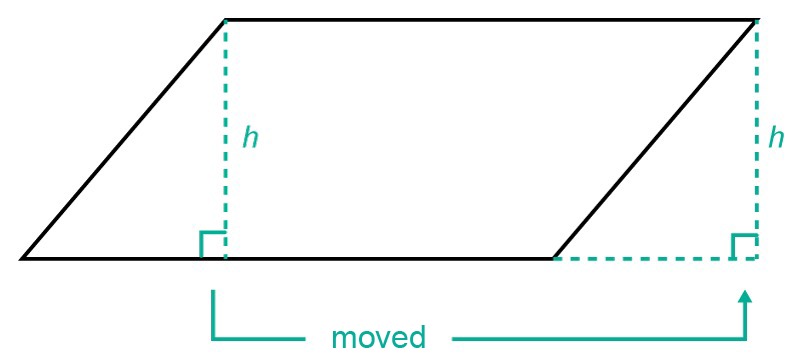
A parallelogram can be formed from a rectangle by cutting a rectangular triangle off the edge of the rectangle and moving it to the opposite edge of the rectangle. Thus, the rectangle and the parallelogram are formed from the same parts. This means that they also must have the same area.

A triangle can be completed into a rectangle according to the dotted lines displayed in the adjacent image. When converting a triangle into the rectangle, the added triangles form an area that is equal in size with the original triangle. Therefore, the area of a triangle is obtained by calculating the area of a rectangle and dividing it by two.
The area of a triangle is the product of its base and its altitude divided by two:
[[$ A = \dfrac{a \cdot h}{2}$]]
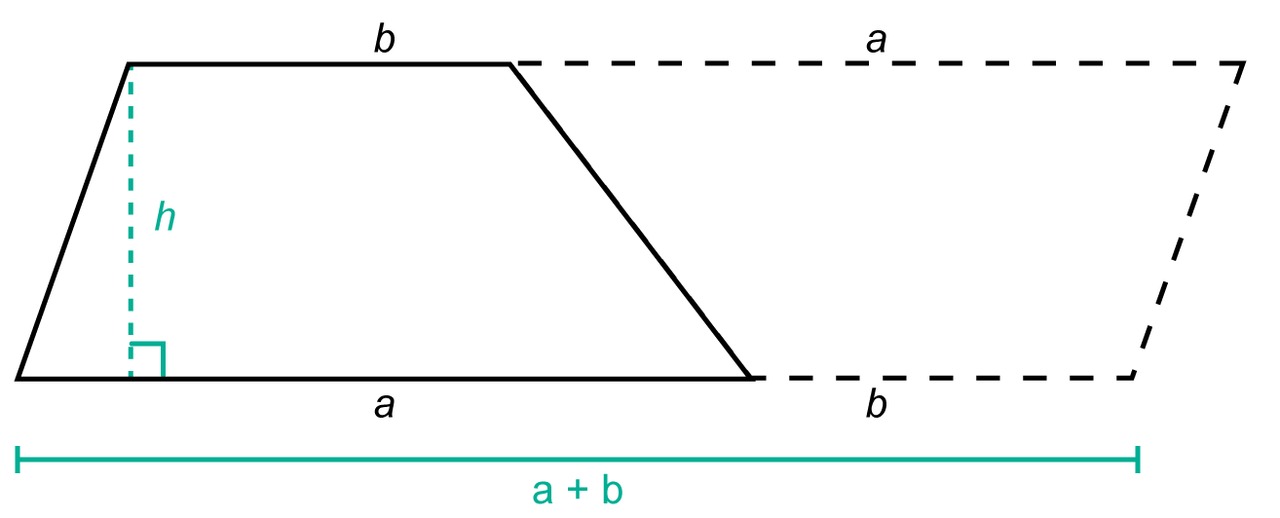
A parallelogram can be formed from two trapeziums of the same size. The height of the parallelogram is the height h of the trapezium, and the sum of the bases of the trapezium is [[$ a + b $]].
The area of the trapezium is obtained by dividing the area of the formed parallelogram by two.
The area of a trapezium is the product of the mean of its bases and its altitude:
[[$ A = \dfrac{a+b}{2} \cdot h $]]
The areas of all other polygons can be calculated by dividing the polygon into triangles or quadrilaterals and adding their areas together. In all area calculations, care must be taken to ensure that each dimension is placed in the calculation formula in the same unit.
